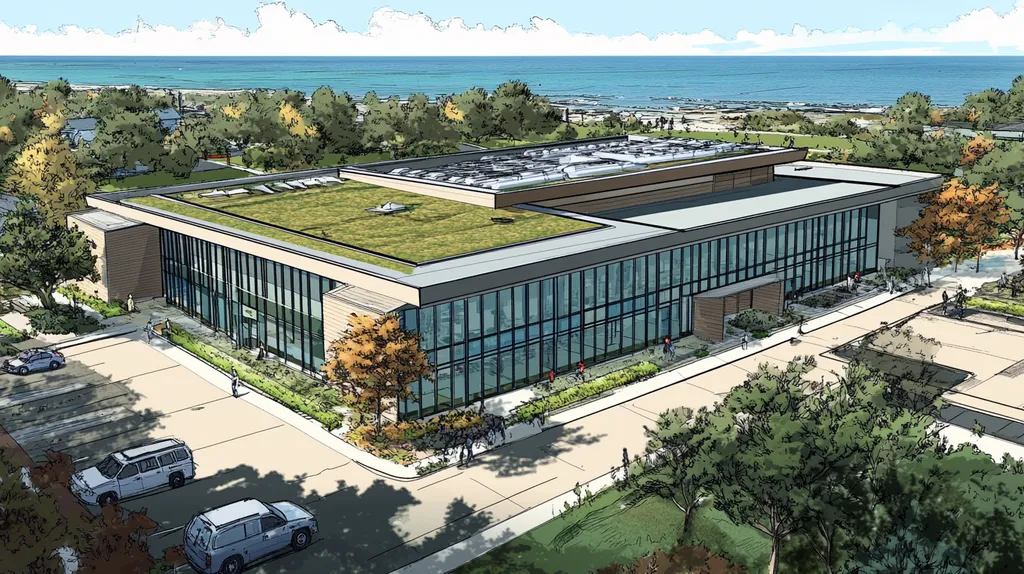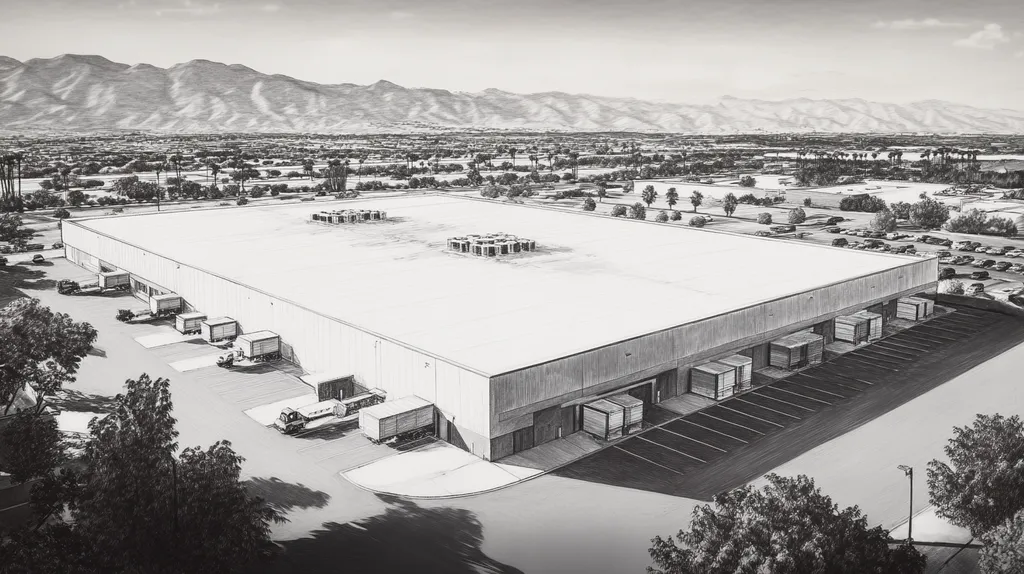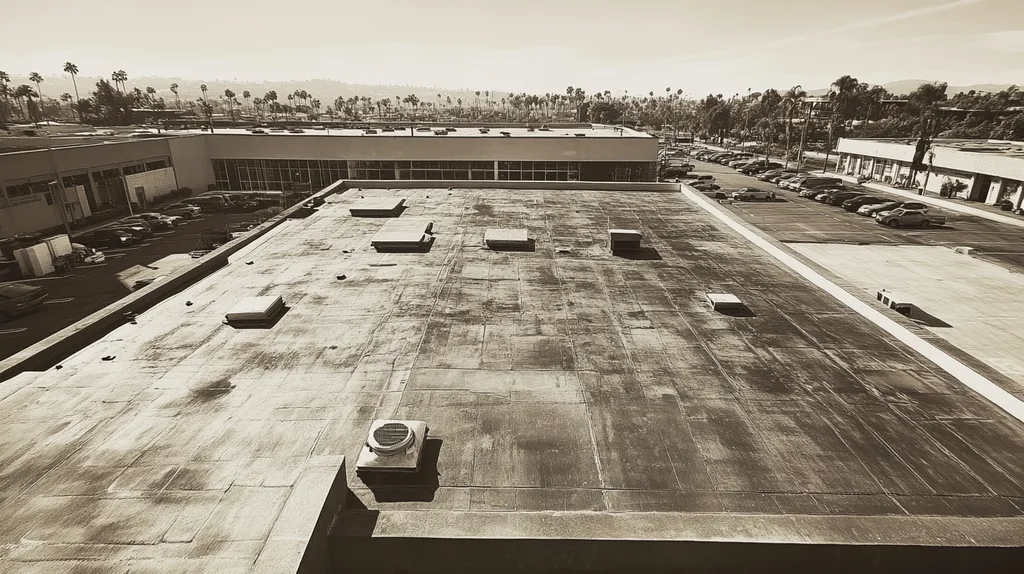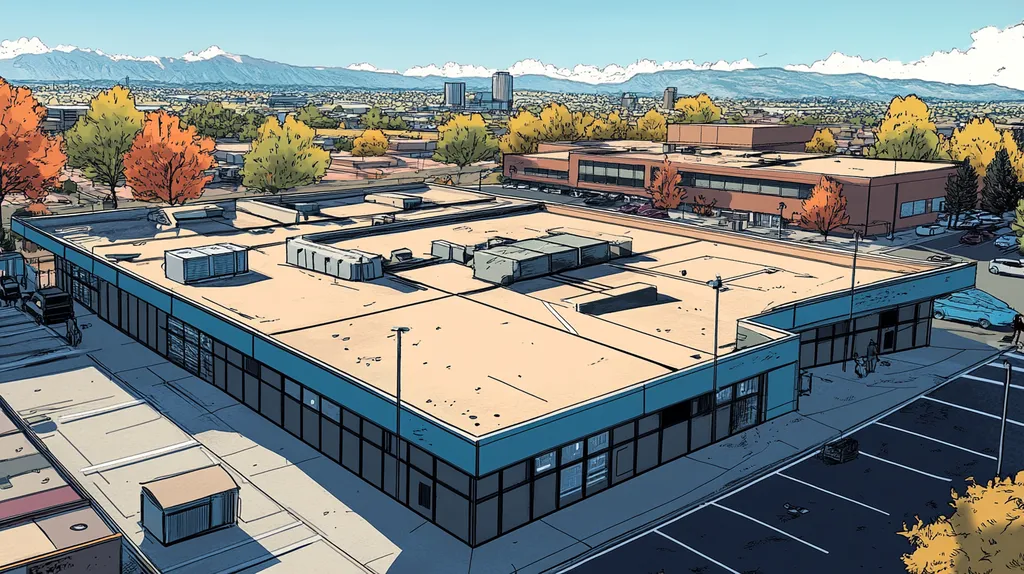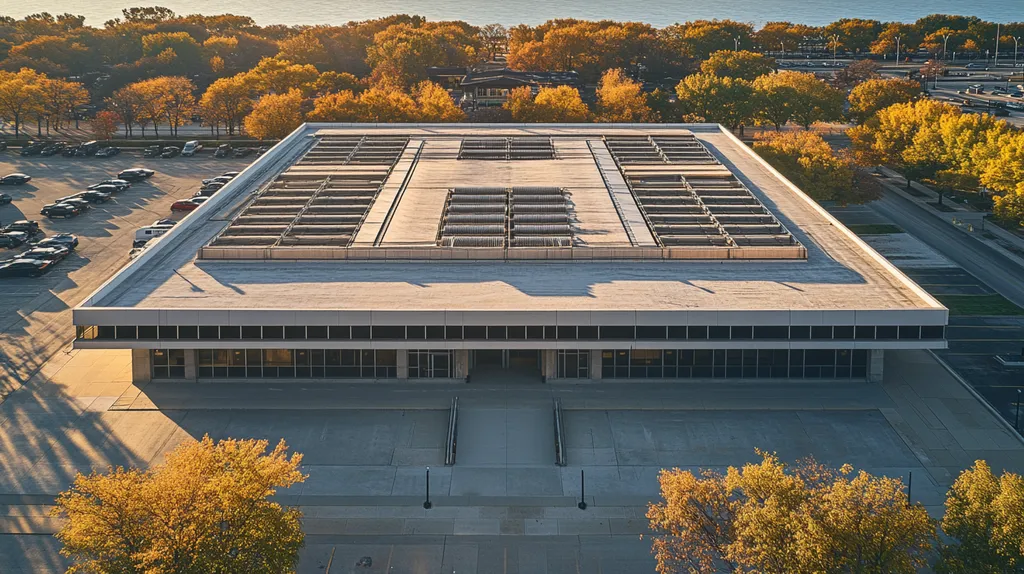Welcome to today’s Battle Royale featuring two roofing heavyweights: “Silicone Coatings” in the east corner versus “Polyurethane Coatings” in the west!
Tonight’s showdown pits these contenders against each other across six punishing rounds designed to test every aspect of their performance for Commercial Roof Reapplication.
At stake? Millions in potential costs, decades of building protection, and the critical performance demands of modern commercial and industrial facilities.
Our professional judging panel will evaluate each round on technical merit, real-world performance, and value delivery. After all six rounds, we’ll declare our ultimate champion.
Ladies and gentlemen, facility managers and building owners… it’s time to rumble!
ROUND 1: INITIAL COSTS & INSTALLATION
When it comes to protecting commercial buildings, choosing the right roof coating can make a $100,000+ difference in long-term costs. With material prices rising and skilled labor becoming scarcer, making an informed decision about roof coatings has never been more critical for property managers and building owners.
Let’s compare silicone and polyurethane coatings across three crucial factors that impact your bottom line: material costs, installation requirements, and project duration.
Material Expenses
Silicone roof coatings offer significant cost advantages upfront, typically ranging from $1.25 to $2.75 per square foot for materials. These coatings are particularly cost-effective compared to traditional roof tear-offs, while their reflective properties contribute to energy savings through reduced cooling costs. (source: West Roofing Systems)
Polyurethane coatings generally command higher prices, ranging from $2.00 to $3.50 per square foot. While this higher cost reflects their superior impact resistance, it can significantly impact project budgets for larger installations.
When factoring in the coverage rates and mil thickness requirements, silicone coatings typically require fewer gallons per square foot to achieve proper protection. This efficiency in material usage further widens the cost gap between the two options.
For material expenses, silicone coatings earn a clear “ADVANTAGE” due to their lower cost per square foot and reduced material requirements.
Installation Complexity
Silicone coatings feature a straightforward single-coat application process that requires minimal specialized equipment. Their moisture-curing properties allow for application even in less-than-ideal weather conditions, reducing weather-related delays.
Polyurethane installations demand more complex procedures, including precise moisture readings and multiple coat applications. These coatings also require strict temperature and humidity controls during application, limiting installation windows.
The simpler application process of silicone reduces labor hours and minimizes the risk of installation errors. This translates to lower labor costs and fewer potential warranty issues down the line.
Given these factors, silicone coatings claim another “ADVANTAGE” in installation complexity.
Project Timeline
Typical silicone coating projects move quickly from start to finish, with most installations completing within 2-3 days for an average commercial roof. The single-coat application and rapid curing time minimize disruption to building operations.
Polyurethane projects often stretch to 4-5 days or longer due to their multi-coat requirements and extended curing times between layers. Weather sensitivity can further extend these timelines, especially in humid or variable conditions.
Faster project completion means less interference with tenant activities and reduced exposure to weather risks during installation. This timeline difference becomes especially significant for larger facilities or those with weather-sensitive operations.
The efficiency advantage gives silicone coatings the “ADVANTAGE” in project timeline considerations.
ROUND 1 WINNER: Silicone Coatings
ROUND 2: DURABILITY & LIFESPAN
When a commercial roof coating fails prematurely, replacement costs can soar to $12 per square foot or more – a devastating hit to any facility’s budget. With increasing extreme weather events and UV exposure, choosing a coating that can truly go the distance has never been more critical.
Understanding the real-world performance differences between silicone and polyurethane coatings can mean the difference between a roof that lasts 20+ years and one that needs replacement in less than a decade.
Weather Resistance
Silicone coatings excel in harsh weather conditions, maintaining their protective properties even after years of UV exposure. Their molecular structure remains stable under intense sunlight, preventing the degradation that plagues many other coating types.
These coatings also demonstrate superior resistance to ponding water, a common issue on flat commercial roofs. Unlike some alternatives, silicone won’t break down or lose adhesion even after prolonged water exposure.
Polyurethane coatings show good initial weather resistance but can become brittle over time when exposed to UV radiation. While they handle temperature fluctuations well, their long-term UV stability doesn’t match silicone’s performance.
For weather resistance, silicone coatings earn a clear “ADVANTAGE”.
Physical Durability
Polyurethane coatings demonstrate exceptional resistance to physical impacts and foot traffic. Their tough, elastic nature allows them to absorb impacts without cracking or showing wear patterns.
These coatings also resist chemical exposure effectively, making them ideal for roofs near industrial exhaust systems. Their superior tensile strength helps prevent tears and punctures from routine maintenance activities.
Silicone coatings, while durable, can be more susceptible to physical damage from foot traffic and maintenance activities. They may require additional protection in high-traffic areas.
For physical durability, polyurethane coatings claim the “ADVANTAGE”.
Long-Term Performance
Silicone coatings maintain their protective properties with minimal degradation for 15-20 years or more. Unlike older methods that require complete removal, these coatings can often be reapplied directly over the existing layer, building upon what’s already there. (source: Unforgettable Coatings)
Their consistent performance means fewer maintenance interventions and reduced lifecycle costs. The ability to recoat without removal also makes future maintenance more cost-effective and environmentally friendly.
Polyurethane coatings typically require more frequent maintenance and may need complete replacement after 10-15 years. Their tendency to become brittle with age can lead to more extensive repairs over time.
For long-term performance, silicone coatings secure the “ADVANTAGE”.
ROUND 2 WINNER: Silicone Coatings
ROUND 3: PERFORMANCE FACTORS
Every year, commercial building owners lose millions of dollars due to premature coating failures and unexpected repairs. The wrong coating choice can lead to structural damage, business interruptions, and skyrocketing maintenance costs. Understanding how different coatings perform in real-world conditions is crucial for protecting your investment.
Adhesion and Bonding
Before applying any coating, proper surface preparation and damage repair are essential for achieving maximum performance. Failing to address underlying issues can significantly reduce a coating’s effectiveness and lifespan. (source: SmartSeal)
Silicone coatings excel in adhesion across diverse substrates, maintaining their bond even under challenging weather conditions. Their molecular structure creates a tenacious grip that resists peeling and delamination, even with minimal surface preparation.
Polyurethane coatings require more extensive surface preparation and specific conditions for proper adhesion. While they can form strong bonds, their sensitivity to moisture during application can compromise long-term performance.
For adhesion and bonding capabilities, silicone coatings earn the “ADVANTAGE”.
Chemical Resistance
Modern commercial roofs face constant exposure to harsh chemicals, from acid rain to industrial emissions. A coating’s ability to resist chemical degradation directly impacts its protective capabilities and lifespan.
Silicone coatings demonstrate excellent resistance to most environmental pollutants and chemical exposures. Their inert nature helps them maintain integrity even when exposed to aggressive industrial emissions.
Polyurethane coatings offer superior resistance to oils, solvents, and industrial chemicals. Their specialized formulation provides outstanding protection against chemical attack and contamination.
In chemical resistance testing, polyurethane coatings claim the “ADVANTAGE”.
Energy Efficiency
Rising energy costs make a coating’s thermal performance increasingly important for building operators. The right coating choice can reduce cooling costs by up to 35% during peak summer months.
Silicone coatings maintain their reflective properties throughout their service life, requiring minimal cleaning to retain their energy-saving benefits. Their stable formulation resists degradation that could diminish thermal performance.
Polyurethane coatings offer good initial reflectivity but may lose effectiveness more quickly due to surface degradation. They often require more frequent cleaning and maintenance to maintain energy-saving properties.
For long-term energy efficiency, silicone coatings secure the “ADVANTAGE”.
ROUND 3 WINNER: SILICONE COATINGS
ROUND 4: MAINTENANCE REQUIREMENTS
Every year, commercial building owners waste millions on preventable roof maintenance issues. Poor coating choices can multiply annual maintenance costs by 3-4 times, while the right decision can extend roof life by decades. Understanding the maintenance requirements of different coating systems isn’t just about protecting your investment – it’s about avoiding budget-crushing surprises.
Inspection Frequency
Silicone coatings maintain their protective properties with minimal degradation, requiring only annual inspections under normal conditions. Their exceptional UV and weather resistance means fewer surprise issues between scheduled maintenance visits.
The process of maintaining silicone coatings follows a straightforward approach: inspection, repairs, seam reinforcement, and occasional reapplication as needed. Regular infrared inspections can identify potential issues before they become major problems. (source: West Roofing Systems)
Polyurethane coatings demand more frequent inspections – typically quarterly – due to their vulnerability to UV degradation and environmental factors. This increased inspection frequency drives up both labor costs and facility disruption.
For inspection requirements, silicone coatings earn the “ADVANTAGE”.
Repair Complexity
When repairs become necessary, silicone coatings offer remarkable simplicity. New silicone readily bonds to existing layers without extensive surface preparation, making spot repairs quick and cost-effective.
Their self-leveling properties help maintain seamless protection even after repairs. Most maintenance can be completed with basic tools and minimal specialized training.
Polyurethane repairs present significant challenges, requiring careful surface preparation and precise application conditions. The coating’s sensitivity to moisture during repairs increases both complexity and failure risk.
For repair complexity, silicone coatings claim the “ADVANTAGE”.
Long-term Care
Silicone coatings resist accumulating dirt and maintain their reflective properties with basic cleaning. Their chemical stability means they won’t break down or require extensive restoration over time.
The material’s natural flexibility allows it to handle building movement and thermal cycling without developing stress points that need attention. This resilience translates to fewer maintenance interventions over the coating’s lifetime.
Polyurethane coatings often require more intensive maintenance as they age, including regular recoating to prevent degradation. Their tendency to become brittle over time can lead to increased maintenance frequency and complexity.
For long-term care requirements, silicone coatings secure the “ADVANTAGE”.
ROUND 4 WINNER: SILICONE COATINGS
ROUND 5: SUSTAINABILITY CREDENTIALS
The commercial roofing industry generates over 8 million tons of waste annually, while buildings account for nearly 40% of U.S. energy consumption. As environmental regulations tighten and energy costs soar, choosing sustainable roofing solutions has become a critical business decision rather than just an environmental choice.
Modern coating choices impact everything from carbon footprint to energy bills to waste management costs. Understanding these implications helps facility managers make decisions that benefit both the environment and their bottom line.
Environmental Impact
Silicone coatings offer superior environmental performance through their low VOC content and exceptional solar reflectivity. Their high solid content means fewer harmful emissions during application, while their reflective properties can reduce roof surface temperatures by up to 50°F.
These coatings maintain their reflective properties for decades with minimal degradation, continuously contributing to reduced cooling loads and energy consumption. Their durability also means less frequent replacement and fewer resources consumed over time.
Polyurethane coatings typically contain higher levels of VOCs and require more frequent reapplication. While some formulations offer good initial reflectivity, this property often degrades more quickly than silicone, reducing long-term environmental benefits.
For environmental impact, silicone coatings earn the “ADVANTAGE”.
Application Efficiency
Different application techniques significantly impact a coating’s sustainability profile and resource consumption. Silicone coatings can be applied through spraying, rolling, or brushing, offering flexibility to match project requirements while minimizing waste and maximizing coverage. (source: SmartSeal)
The single-coat application of silicone reduces equipment usage, labor hours, and energy consumption during installation. Their moisture-curing properties also eliminate the need for additional heating or environmental controls.
Polyurethane coatings require multiple layers and strict environmental controls during application. This increases energy consumption, extends equipment operation time, and potentially creates more waste through partial material sets.
For application efficiency, silicone coatings claim the “ADVANTAGE”.
End-of-Life Management
Silicone coatings can often be recoated directly over existing layers, eliminating the need for removal and disposal. This approach significantly reduces landfill waste and preserves embodied energy in the existing coating.
When removal is necessary, silicone coatings can be processed for recycling more easily than many alternatives. Their inert nature also means they pose minimal environmental risks during disposal.
Polyurethane coatings frequently require complete removal before reapplication, generating substantial waste. Their chemical composition makes recycling more challenging, often resulting in landfill disposal.
For end-of-life management, silicone coatings secure the “ADVANTAGE”.
ROUND 5 WINNER: Silicone Coatings
ROUND 6: SPECIALIZED APPLICATIONS
In specialized commercial environments, selecting the wrong roof coating can lead to catastrophic failures costing upwards of $250,000 in emergency repairs and business interruption. From food processing facilities to chemical plants, each environment presents unique challenges that push coating materials to their limits.
Understanding how different coatings perform under extreme conditions isn’t just about protecting your roof – it’s about safeguarding your entire operation from costly shutdowns and compliance violations.
High-Temperature Environments
In industrial settings where roof temperatures can exceed 180°F, coating stability becomes critical. Restaurant exhaust systems, manufacturing processes, and HVAC equipment create intense heat zones that can quickly degrade standard roofing materials.
Silicone coatings maintain their structural integrity and flexibility even under extreme heat conditions. Their unique molecular structure resists thermal breakdown, preventing cracking and delamination in high-temperature zones.
Polyurethane coatings begin to show signs of degradation at sustained temperatures above 160°F. While they offer good initial heat resistance, prolonged exposure can lead to brittleness and loss of protective properties.
For high-temperature applications, silicone coatings earn the “ADVANTAGE”.
Clean Room Environments
Manufacturing facilities requiring clean room conditions demand roofing solutions that won’t release particles or emit harmful compounds. Even minor coating degradation can compromise product quality and regulatory compliance.
Silicone coatings exhibit exceptional stability with minimal particle shedding or off-gassing after curing. Their inert nature makes them ideal for sensitive manufacturing environments, from pharmaceuticals to electronics.
Polyurethane coatings may continue to release microscopic particles as they age and can emit VOCs during thermal cycling. This characteristic makes them less suitable for facilities with strict air quality requirements.
For clean room applications, silicone coatings claim the “ADVANTAGE”.
Food Processing Facilities
Food processing facilities face unique challenges where hygiene standards are paramount and chemical cleaning agents are routinely used. These environments require coatings that can withstand aggressive sanitizing procedures while maintaining FDA compliance. (source: SmartSeal)
Silicone coatings resist breakdown from cleaning chemicals and maintain their protective properties even with frequent sanitization. Their non-reactive nature prevents contamination concerns in food processing areas.
Polyurethane coatings show higher susceptibility to chemical degradation from industrial cleaners. Over time, this can lead to coating breakdown and potential contamination risks.
For food processing environments, silicone coatings secure the “ADVANTAGE”.
ROUND 6 WINNER: SILICONE COATINGS
AND THE WINNER IS…
After six grueling rounds of technical combat, we have a decisive victor! With an astounding 6-0 sweep across all categories, SILICONE COATINGS emerges as our undisputed heavyweight champion of commercial roof reapplication!
Silicone dominated the competition with superior performance in cost efficiency, weather resistance, simplified maintenance, and environmental sustainability. Its outstanding UV stability, moisture resistance, and single-coat application capabilities delivered knockout punches in round after round.
But don’t count polyurethane out completely! This formidable contender still packs a powerful punch when it comes to chemical resistance and impact protection. For facilities facing heavy foot traffic or extreme industrial chemical exposure, polyurethane remains a strong contender worthy of consideration.
IMPORTANT NOTICE: While this analysis reflects general industry findings, every building presents unique challenges. Local climate conditions, substrate materials, and specific facility requirements can significantly impact coating performance. Property owners should always consult qualified roofing professionals who can evaluate their specific situation before making final decisions.
Ladies and gentlemen, in the high-stakes arena of commercial roofing, victory goes not just to the strongest contender, but to those who carefully match their facility’s unique requirements with the right coating’s capabilities. Choose wisely, and may your roof reign supreme for decades to come!
FREQUENTLY ASKED QUESTIONS
Q. What are the costs of coatings for a commercial roof?
A. Silicone coatings typically cost between $1.25 to $2.75 per square foot. In contrast, polyurethane coatings range from $2.00 to $3.50 per square foot. These costs can significantly impact your project budget and overall facility expenses, so careful consideration is essential.
Q. How do the lifespans of silicone and polyurethane coatings differ for an industrial roof?
A. Silicone coatings typically last 15-20 years with minimal maintenance. Conversely, polyurethane coatings often need replacement in 10-15 years due to quicker degradation. Choosing the right coating impacts long-term costs, so consider lifespan carefully.
Q. How do silicone coatings perform under extreme weather for commercial roofs?
A. Silicone coatings handle extreme weather exceptionally well, maintaining their protective properties in harsh conditions. They resist UV damage and ponding water, making them ideal for flat commercial roofs. This performance ensures longevity and reduces maintenance costs.
Q. How often should a commercial roof with silicone coatings be inspected?
A. Commercial roofs with silicone coatings should be inspected annually under normal conditions. This frequency helps identify potential issues early on, reducing the likelihood of costly repairs and ensuring the roof retains its protective properties.
Q. What are the environmental benefits of silicone coatings for commercial roofs?
A. Silicone coatings offer low VOC content and excellent solar reflectivity, which reduces cooling needs. They also have durable properties that minimize waste, leading to long-term energy savings and a lower environmental impact when compared to alternatives.
Q. Can silicone coatings be used in specialized applications?
A. Yes, silicone coatings excel in specialized applications like food processing and clean rooms. Their stability and resistance to chemicals make them ideal for environments that demand strict hygiene and regulatory compliance, minimizing contamination risks.
Q. How do maintenance requirements compare between silicone and polyurethane coatings for a commercial roof?
A. Silicone coatings require less frequent inspections and simpler repairs, typically only needing annual reviews. In contrast, polyurethane coatings demand more frequent inspections and complex repairs due to their susceptibility to UV damage, which increases maintenance costs.

